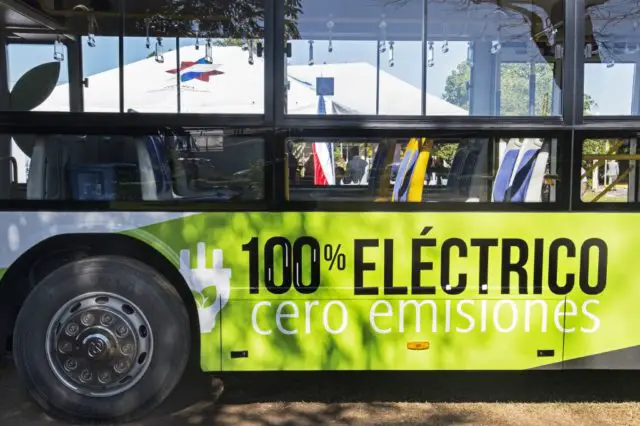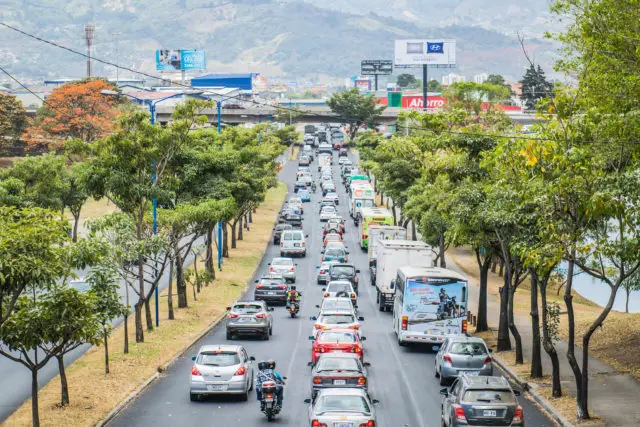Specific actions to transform Costa Rican public transport using fleets from renewable energy received a strong boost. Regarding this, we highlight the incorporation of 12 buses -100% electric- which will be purchased by a large group of bus businessmen to join the Bus Transport Electrification Initiative (IETP-Bus). They will also support the actions carried out by the Ministry of Public Works and Transport (MOPT), and will suggest continuing in this line to guarantee the success of the pilot plan.
In this important commitment of the transport industry, a total of 12 concessionaires will provide the 12 units, representing a total investment that exceeds US$ 4 million, which includes buses and their respective loaders. In this way, they join the initial pilot plan that consisted of the donation of 3 electric buses by the government of Germany through the German Development Cooperation GIZ, with the contribution of the Costa Rica-United States Foundation for Cooperation (CRUSA), UN Environment, and the IDB.

“With these actions we want to reiterate the proactivity of the sector, which has even advanced on its own initiative on issues such as fleet improvement, which is the newest in Latin America, with an average of 6.9 years old, venturing into clean technologies and many more efficient ones such as “Euro V” technology, placement of surveillance cameras in the units, passenger control system, devices for the elderly; 100% of the fleet is accessible to people with disabilities, as they all have ramps, also their own investments in terminals”, said Silvia Bolaños, executive director of the National Chamber of Transport of Costa Rica (Canatrans) and spokesperson for the business sector.
As part of the commitment made by the sector, Bolaños said that they have delivered the transport sectoring studies and we are working together with the Central Bank to define the technical requirements for the implementation of electronic payment.
For the concessionaires, the suggestions to finalize the modernization of public transport in the country are as follows:
• To expand the implementation of exclusive lanes for public transport, bus mode, on those routes associated with the pilot plan.
• To consider infrastructure works such as bays that facilitate the operation of the units, which would generate a direct positive impact for the users of the service.
• To seek soft financing, green funds or others, that provide favorable conditions to promote this type of project, knowing that the costs of the investments that the modernization of public transport entails, in addition to the inclusion of technology, could suppose a determining factor, being public transport a service that is not subsidized in our country.
• To analyze the concession term factor that allows diluting operating and financial costs over longer periods.
• To enable an expedited concession renewal process
• To promote that private electricity generators join the pilot plan.
As part of the commitment made by the concessionaires, they will provide 100% of the information on the operation of their electrical units, as well as at least one combustion unit, in order to generate the necessary information for the gradual inclusion of more electric units in the public service for the paid transport of people by bus.

Where will those 100% electric units operate?
The expansion to the pilot plan for the electrification of public transport, bus mode, will reach a total of 12 routes, which include the areas of San José to Cartago, Calle Blancos, Moravia, Hatillo, Barrio Escalante, Escazú, Ciudad Colón and units that reach the Juan Santamaría airport; and to the airport in Liberia Daniel Oduber. There will also be electric buses for routes from Guápiles- Puerto Viejo de Sarapiquí, Guápiles- Siquirres and Turrialba – Juan Viñas.
For the transport business sector, the implementation of 100% electric models complements the efforts to have highly environmentally friendly fleets. Currently, more than 5 thousand units -with an average of 7 years- circulate in the country . Likewise, they are vehicles that must meet a series of requirements, such as attending twice a year the technical vehicle inspection.
This guarantees that this sector has been concerned about not generating the pollution in our country, and so it is confirmed by the National Energy Plan, which highlights that the public transport sector is the least polluting one.

